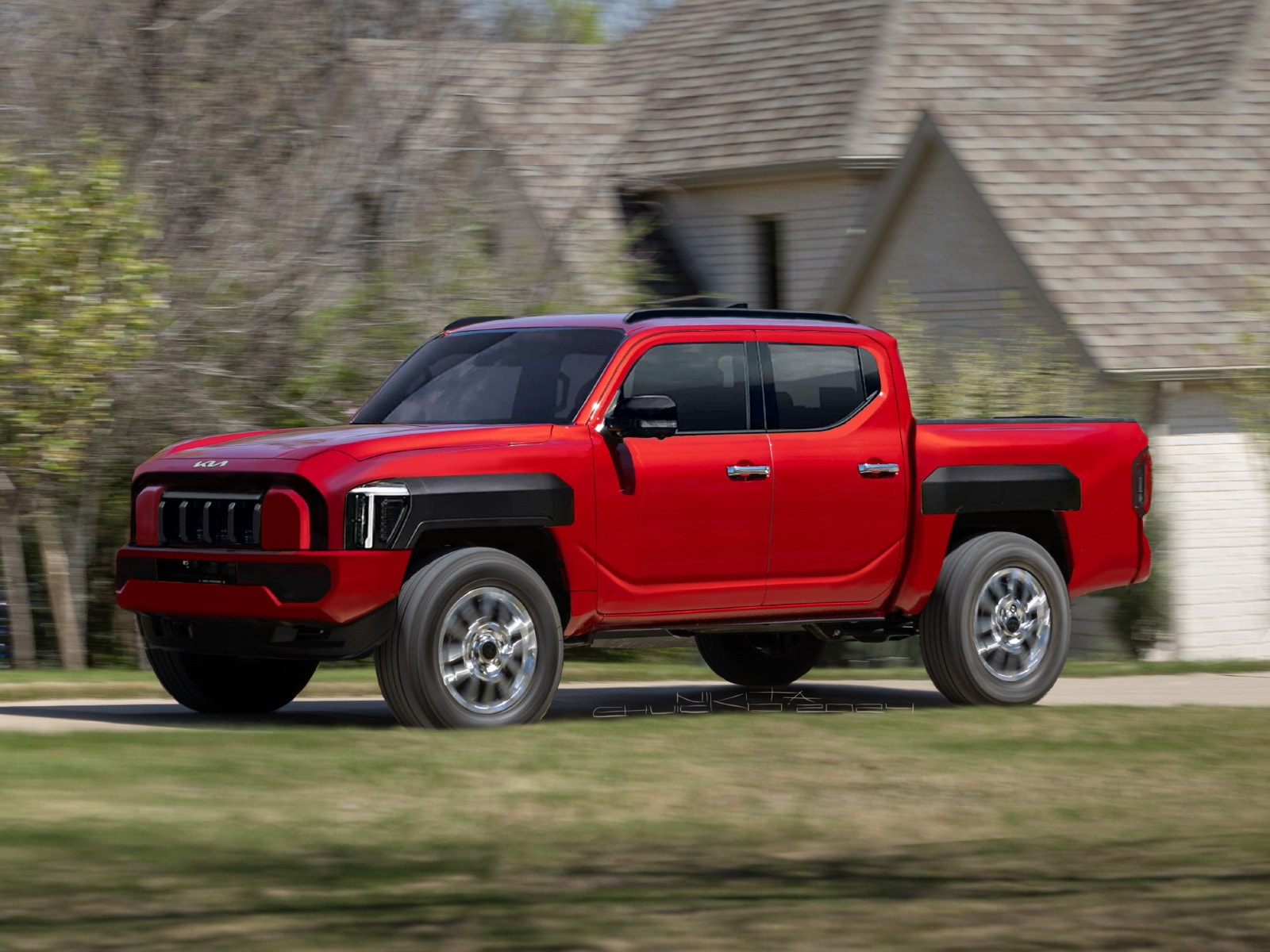When shopping for a truck, most buyers focus on power, towing capacity, off-road capabilities, and interior comfort. But one of the most overlooked—yet crucial—factors is warranty coverage.
A truck might seem like a solid investment upfront, but if its warranty is limited or short-lived, unexpected repairs can quickly erase any initial savings.
On the flip side, trucks with comprehensive, long-lasting warranties offer peace of mind, lower long-term ownership costs, and a safety net that goes far beyond the first few years.
The warranty terms offered by automakers vary significantly, even in the highly competitive pickup segment.
Some manufacturers back their trucks with industry-leading protection that includes powertrain coverage up to 10 years or 100,000 miles, roadside assistance, and even corrosion protection.
Others offer the bare minimum required to stay competitive—often leaving owners vulnerable to costly repairs after only a few years of use.
This article takes a closer look at both ends of the spectrum. First, we’ll highlight five trucks that offer the best warranty coverage in the industry, outlining what makes them stand out.
Then, we’ll examine five trucks that offer minimal protection, helping potential buyers understand what they might be missing. In the end, it’s not just about muscle—it’s also about peace of mind.
Also Read: 5 Reliable City Commuters and 5 That Get Stuck in Traffic
5 Trucks With Best Warranty Coverage
For truck owners, reliability is non-negotiable. Whether you’re hauling equipment, towing a trailer, or just commuting with rugged flair, you want to know your truck won’t let you down—and if it does, that the repairs won’t leave your bank account empty.
That’s where a strong factory warranty becomes a true asset. A truck backed by generous, well-structured warranty coverage doesn’t just offer peace of mind—it’s a declaration from the manufacturer that they stand by the quality of their engineering.
While most manufacturers offer a basic 3-year/36,000-mile bumper-to-bumper warranty and a 5-year/60,000-mile powertrain warranty, a few go far beyond these norms.
Some brands extend their powertrain warranties to 10 years, add roadside assistance for up to 100,000 miles, or include corrosion protection and hybrid-specific coverage.
These extended warranties can save owners thousands over the life of the truck—especially as components age and wear out through heavy use.
In this segment, we highlight five trucks that provide the best warranty coverage in the industry. These models were selected based on warranty length, coverage type, ease of claim, and added perks like roadside assistance and rust protection.
Trucks with longer and more comprehensive warranties are especially valuable to buyers who plan to hold onto their vehicles long-term or use them in demanding environments.
This isn’t just about who offers the longest number of years—it’s about real-world protection.
A long powertrain warranty is great, but not if it excludes commonly failing parts. That’s why we’re digging into the fine print to help you understand which truck brands truly stand by their products and protect their customers from major expenses.
Let’s dive into five trucks that offer the strongest manufacturer warranties—where durability isn’t just promised, it’s contractually guaranteed.
1. Hyundai Santa Cruz – A Compact Truck With a Giant Warranty
Though it stands apart from traditional body-on-frame pickups, the Hyundai Santa Cruz is redefining expectations—not only with its car-like handling and clever design but also with its class-leading warranty coverage.
Hyundai is well known for offering one of the best warranty packages in the entire automotive industry, and the Santa Cruz, their only pickup truck, is no exception.
What makes the Santa Cruz stand out immediately is Hyundai’s 10-year/100,000-mile powertrain warranty, one of the longest you’ll find—not just in trucks, but across all vehicles.
It’s paired with a 5-year/60,000-mile bumper-to-bumper warranty, offering more comprehensive coverage than rivals like Ford or Chevrolet.
Even better, Hyundai includes 5 years of unlimited-mileage roadside assistance, providing long-term support for flat tires, battery jumps, and more.
Hyundai also adds in anti-perforation (rust-through) coverage for 7 years/unlimited miles, which can be important for truck owners in salt-prone climates.
And if you’re thinking about resale value, the warranty is fully transferable within the first 5 years, giving second owners a strong incentive and helping preserve used market appeal.
While some may argue the Santa Cruz is more of a crossover with a bed than a “real truck,” its capability is surprisingly strong for most daily needs.
With a towing capacity of up to 5,000 pounds and available all-wheel drive, it suits urban drivers, weekend adventurers, and light-duty users extremely well. Its unibody design means it rides smoother than traditional pickups, and its tech and cabin refinement rival many SUVs.
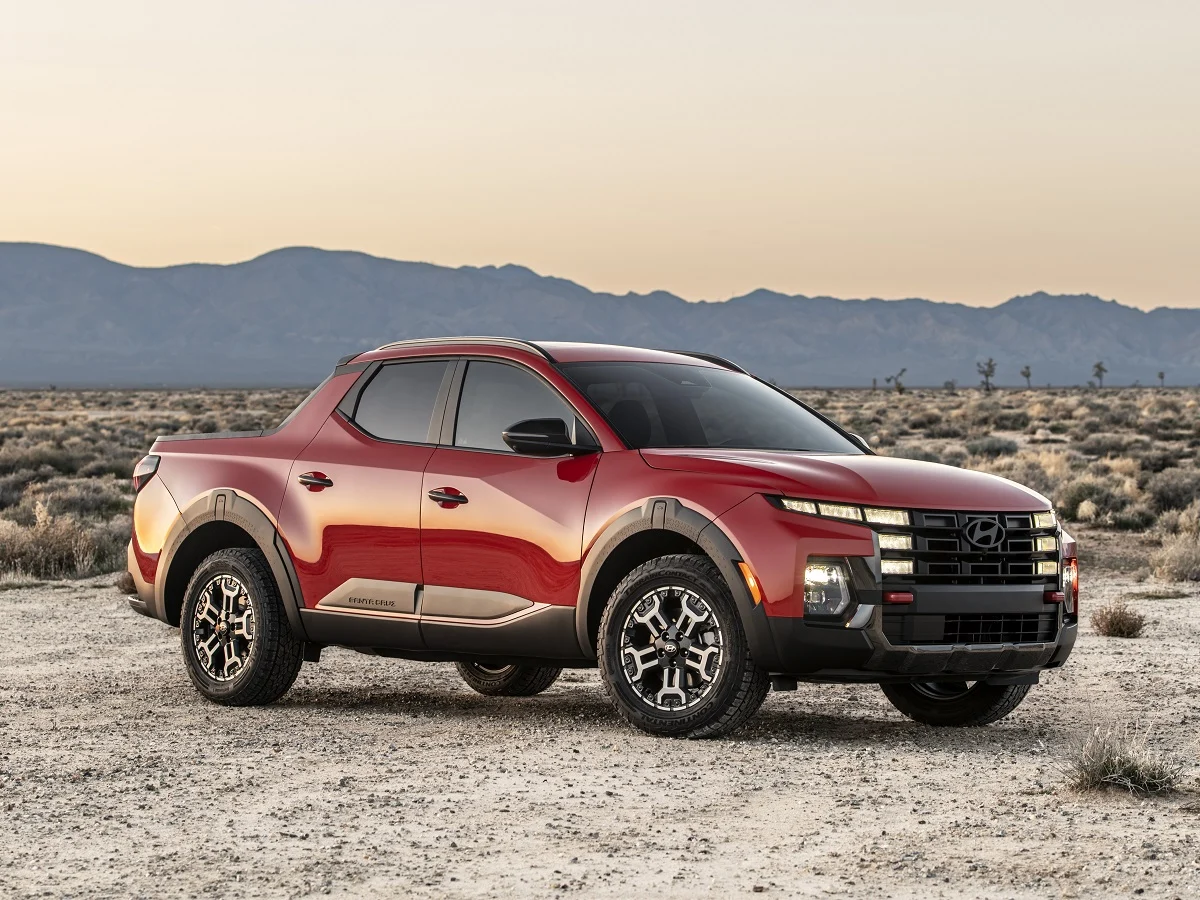
Hyundai’s aggressive warranty strategy is part of its brand identity, designed to build trust in its quality. For buyers who want truck utility without sacrificing peace of mind, the Santa Cruz offers an unbeatable blend of coverage and confidence.
In an industry where warranties often serve as a warning of how long manufacturers expect their vehicles to last, the Santa Cruz flips the script. It says, boldly: “We’ve got your back. For a long time.”
2. Toyota Tundra – Solid Build with Extra Coverage on Hybrids
The Toyota Tundra has long been regarded as one of the most dependable full-size pickup trucks on the market.
Built in Texas with a focus on durability and quality, the Tundra backs up its reputation with a warranty package that, while not the longest in terms of years, still stands out—especially for hybrid models and reliability-focused buyers.
The standard Tundra comes with a 3-year/36,000-mile bumper-to-bumper warranty and a 5-year/60,000-mile powertrain warranty, which is par for the course in the segment.
But things get more interesting when you look at the hybrid versions, which include Toyota’s 8-year/100,000-mile hybrid system warranty and a 10-year/150,000-mile battery warranty.
This is significant, as the latest generation of Tundras heavily promotes its i-FORCE MAX hybrid powertrain, especially in higher trims.
Toyota also includes 5 years/unlimited miles of roadside assistance, which adds another layer of protection many buyers overlook.
The brand’s anti-corrosion warranty runs 5 years with unlimited mileage, helping protect the body from rust—especially important in snowbelt regions or for trucks used in off-road or rugged jobsite environments.
One often underestimated part of Toyota’s strength is its long-term reliability and low maintenance needs. While the warranty may not rival Hyundai’s in length, most owners don’t end up needing extensive repairs during the warranty period at all.
The Tundra is engineered with simplicity and longevity in mind, and that reliability translates into lower out-of-pocket costs, especially during the early years of ownership.
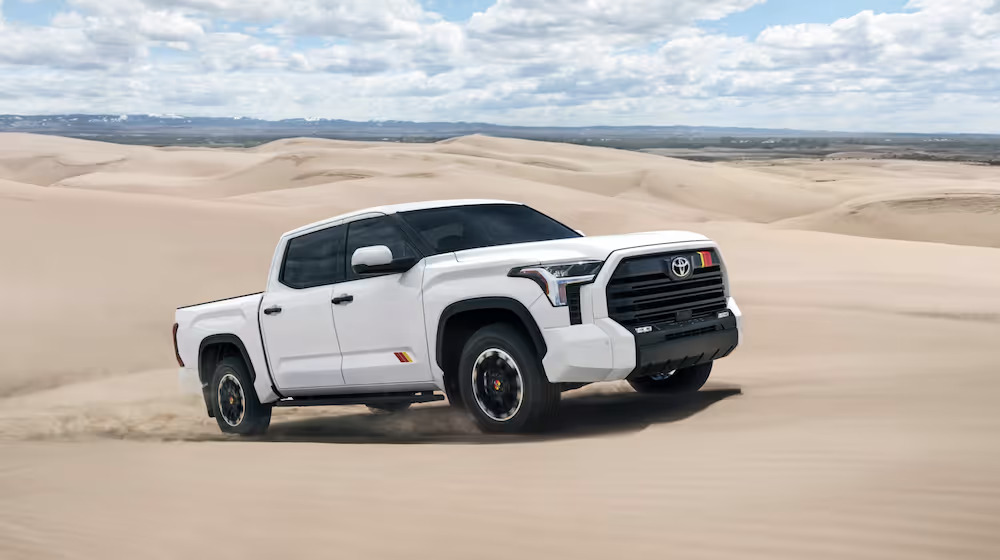
For those opting for the hybrid Tundra, the extended component coverage and exceptional battery protection make it one of the most warranty-secure trucks in the full-size market, offering not just muscle but long-term reassurance.
If you’re looking for a truck with a strong build, legendary dependability, and hybrid-enhanced warranty advantages, the Tundra stands tall as a worthy investment—especially if your goal is to drive with confidence long after the initial excitement of ownership wears off.
3. Ram 1500 – Confidence Through Component Coverage
The Ram 1500 is known for its plush ride, refined cabin, and excellent towing capabilities—but what many buyers don’t fully realize is that Ram also delivers one of the more generous warranties among traditional American pickups, especially in its diesel-powered variants.
While it doesn’t break records on headline numbers, it quietly offers strong real-world value through targeted, extended coverage.
Standard gasoline-powered Ram 1500 trucks come with a 3-year/36,000-mile bumper-to-bumper warranty and a 5-year/60,000-mile powertrain warranty, just like most competitors.
But for buyers who choose the 3.0-liter EcoDiesel V6 engine, Ram stretches the powertrain warranty out to 5 years/100,000 miles, giving diesel owners extra assurance that their investment is protected over the long haul.
This longer diesel coverage is particularly attractive to heavy-duty users who put serious miles on their trucks.
And since diesel engines tend to be more expensive to repair and service, that additional coverage could save thousands in the event of a failure.
Additionally, Ram provides 5 years/60,000 miles of roadside assistance, which includes towing, flat tire service, and battery jump-starts.
While not unlimited like Hyundai’s or Toyota’s hybrid roadside coverage, it still covers owners throughout the typical ownership window for new vehicles.
Another point in Ram’s favor is the comprehensive corrosion protection—5 years with unlimited mileage—which is especially valuable for northern or coastal buyers.
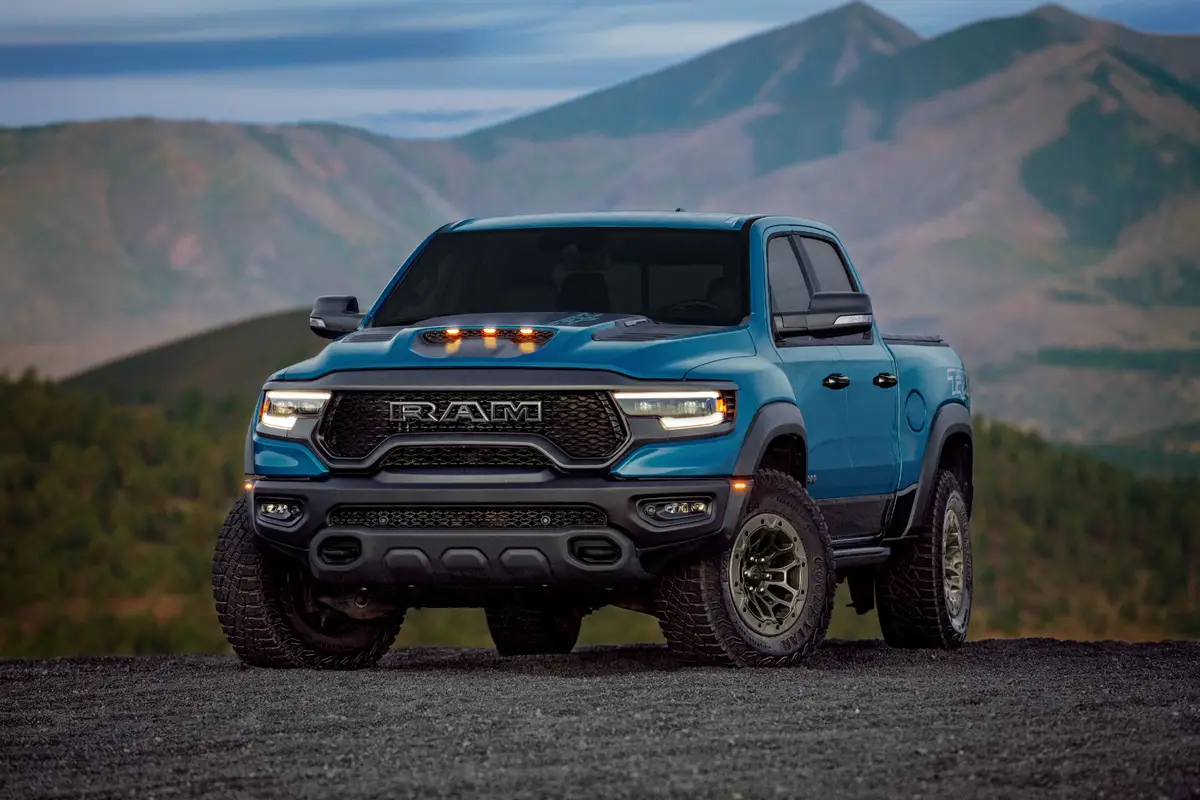
Trucks often face tough environmental exposure, so rust resistance backed by a strong warranty is a meaningful bonus.
What helps set Ram apart isn’t just numbers—it’s the flexibility of coverage depending on use case. Diesel trucks with long hauls and daily workloads benefit most from Ram’s approach, while casual owners still enjoy solid baseline coverage.
If you’re looking for a full-size pickup with upscale appeal, powerful engine options, and longer diesel protection than most, the Ram 1500 is a smart pick. It’s not only strong where it counts, but smartly backed where it matters most—at the service bay.
4. Mitsubishi Triton (L200) – Exceptional Global Warranty Strength
Though not available in the U.S. market, the Mitsubishi Triton—also known in some regions as the L200—deserves mention for its remarkable global warranty, especially for those purchasing in markets like Europe, Asia, and Australia where it competes directly with the Toyota Hilux and Ford Ranger.
Mitsubishi’s warranty coverage is among the best in the pickup segment globally and gives buyers confidence over long ownership periods.
In regions such as the UK and Australia, Mitsubishi offers up to a 10-year/100,000-mile powertrain warranty, which rivals Hyundai’s terms and outperforms most others in its class.
That’s in addition to a 5-year/62,500-mile bumper-to-bumper warranty in many regions, and 12 years of anti-corrosion perforation coverage—a major win for customers operating in rust-prone coastal or snowy environments.
Mitsubishi also typically includes 5 years of roadside assistance and free servicing perks for the first few years, depending on the dealership and country.
These inclusions make the Triton one of the most worry-free ownership experiences available in the mid-size truck market abroad.
Beyond just warranty paper promises, the Triton is built for abuse. It’s known for its durability in emerging markets, with proven performance in rough terrain, agricultural work, and industrial environments.
In Australia and parts of Southeast Asia, it’s commonly used in mining and utility sectors—yet it still returns strong resale values, in part due to the long warranty coverage that backs up its workhorse image.
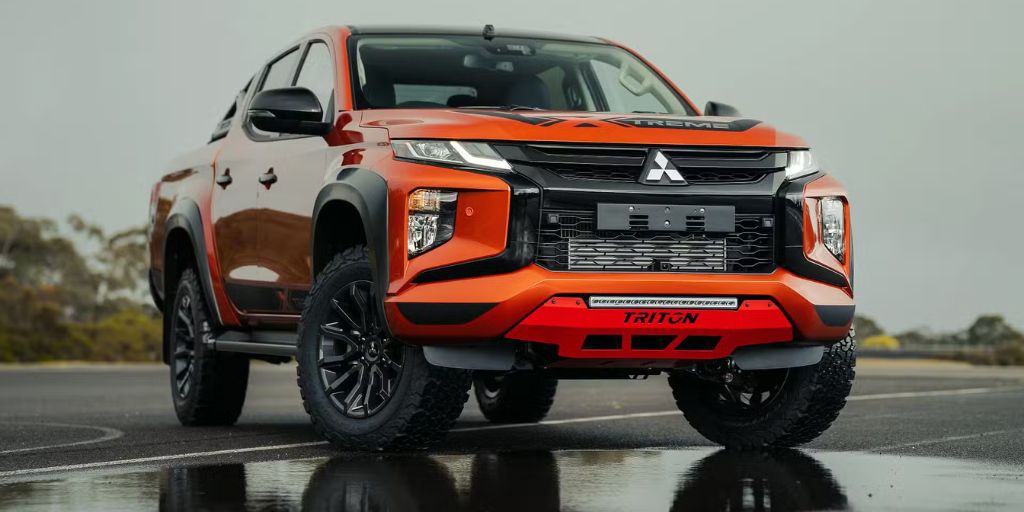
Even though Mitsubishi has exited the U.S. pickup market, the Triton’s reputation and warranty success abroad reflect a brand committed to standing by its products.
For global truck buyers, it’s one of the few pickups where tough capability meets unmatched warranty confidence—especially in demanding climates and industries.
While American trucks dominate headlines, the Mitsubishi Triton quietly proves that exceptional warranty coverage isn’t limited by continent—it’s driven by commitment.
5. Kia Tasman (Upcoming) – Promising Warranty Benchmark in the Truck World
Though it has not yet hit dealer lots, the upcoming Kia Tasman is already making waves in the pickup world—not just for what it promises in terms of performance and design, but for the warranty expectations it inherits from its brand lineage.
If Kia continues its well-established warranty tradition with this mid-size truck, the Tasman may set a new industry benchmark before it even turns a wheel in customer hands.
Kia is famous for offering one of the longest and most comprehensive warranties in the industry: a 10-year/100,000-mile powertrain warranty, a 5-year/60,000-mile bumper-to-bumper warranty, and 5 years/unlimited miles of roadside assistance.
These warranties are standard across most of Kia’s U.S. lineup and widely praised for being both comprehensive and hassle-free when it comes to claims.
While the Tasman is initially expected to launch in Australia and other international markets, U.S. availability is rumored to follow in 2025 or 2026.
If the Tasman arrives with the same warranty structure as Kia’s current models—like the Telluride, Sorento, or Sportage—it will immediately become one of the most warranty-secure trucks available, rivaling the Hyundai Santa Cruz (Kia’s corporate cousin) and standing out among traditional competitors like the Toyota Tacoma and Ford Ranger.
What makes Kia’s warranty appealing is not just the numbers—it’s the brand’s strong track record of honoring claims without unnecessary pushback. Buyers tend to trust Kia’s warranty because it consistently delivers on real-world repairs and service.
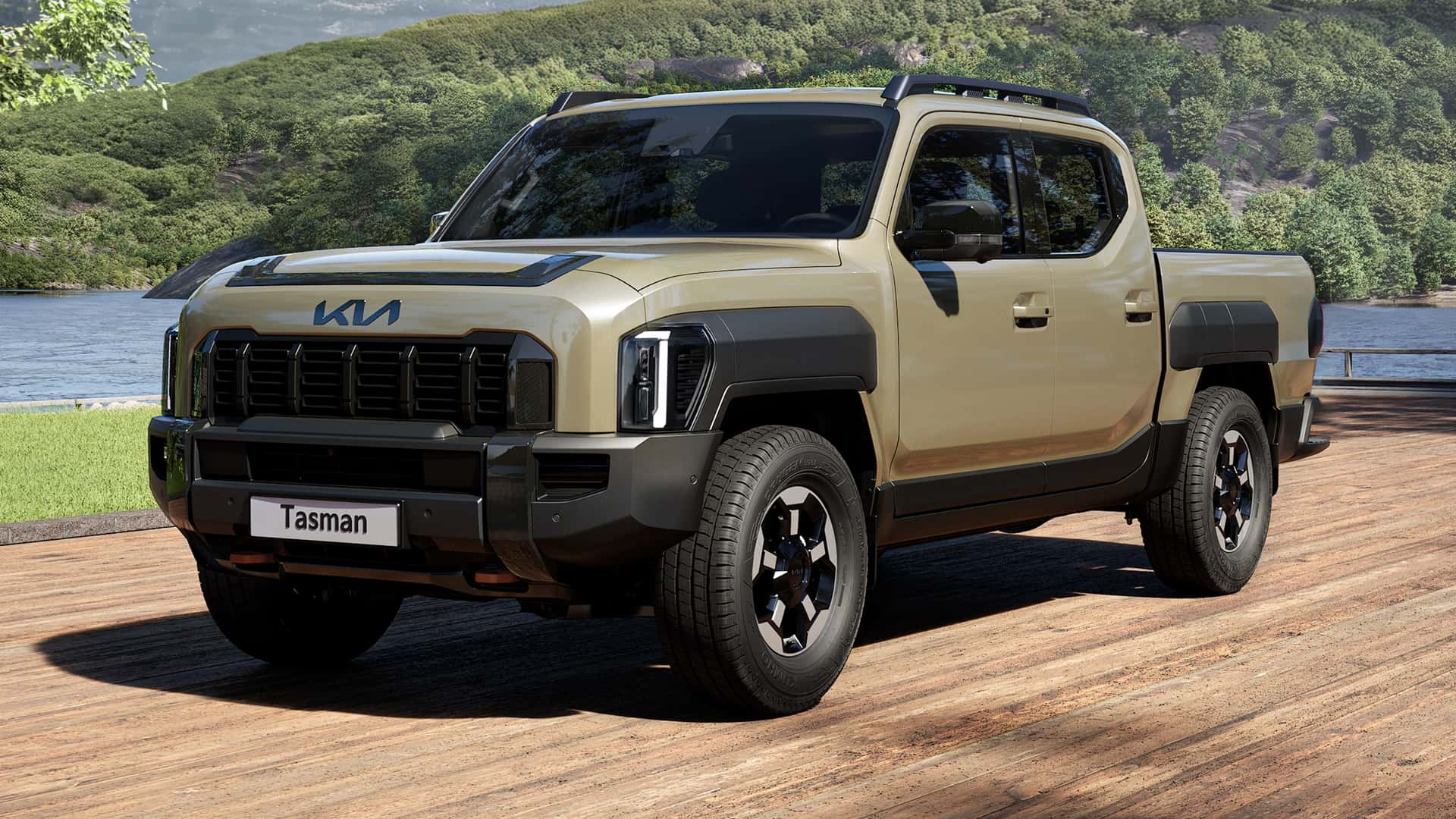
The Tasman is also shaping up to be an exciting product on its own merits. Based on recent concept previews and leaks, it is expected to offer a bold design, modern tech, and both diesel and hybrid variants tailored for different global markets.
If Kia applies its usual formula—affordable pricing, feature-packed trims, and unbeatable warranty coverage—the Tasman could become a disruptor in the mid-size truck segment.
If you’re a buyer who wants innovation, strong value, and long-term protection baked into the deal, the Kia Tasman should be on your watchlist. It may be the truck with the boldest warranty before it even arrives.
5 Trucks With Minimal Warranty Coverage
When buyers consider a truck’s capabilities—its towing, payload, engine specs, and tech features—warranty coverage often gets overlooked. Yet, it’s one of the most important elements in long-term ownership satisfaction.
Trucks are designed to handle tough jobs, heavy loads, and harsh environments, so having strong warranty coverage can make a significant difference in both out-of-pocket repair costs and overall peace of mind.
Unfortunately, not all trucks offer warranties that instill confidence. Some models provide minimal or industry-standard coverage that may seem adequate on paper, but fall short when it comes to real-world usage or compared to competitors that go the extra mile.
This is especially frustrating for owners who plan to keep their truck beyond three to five years, or those who use their vehicle for commercial, rural, or off-road duties that increase wear and tear.
This section highlights five trucks that offer the least generous warranty coverage in the industry.
While these trucks may perform well in other areas—be it power, ride comfort, or technology—they’re backed by warranty programs that either fall short in duration, lack robust powertrain protection, or fail to include roadside assistance.
It’s important to clarify: a limited warranty doesn’t necessarily mean a vehicle is unreliable. But for buyers comparing similarly priced competitors, warranty terms can indicate how much faith a manufacturer has in its own engineering.
When trucks with higher upfront prices don’t include better-than-average coverage, it can make their long-term value questionable.
Whether you’re buying for business or recreation, understanding warranty coverage is essential.
These next five trucks remind us that in an industry that demands strength and durability, the warranty backing should match the marketing bravado. Otherwise, buyers could end up shouldering the cost of repairs a manufacturer should have covered.
1. Nissan Frontier – Bare Minimum Warranty for a Mid-Size Workhorse
The Nissan Frontier has earned a solid reputation over the years for being a simple, no-nonsense mid-size truck with decent off-road chops and a strong V6 engine.
But when it comes to warranty coverage, Nissan’s approach with the Frontier is one of the least competitive in its class.
While the truck itself is rugged, the backing behind it is surprisingly underwhelming—especially when compared to its newer, more warranty-generous rivals.
The Frontier comes with a 3-year/36,000-mile bumper-to-bumper warranty and a 5-year/60,000-mile powertrain warranty.
This is industry standard, but that’s the issue: it does nothing to stand out, especially considering the Frontier’s stiff competition from trucks like the Hyundai Santa Cruz or even the Ford Maverick, which offer similar pricing but greater warranty features or extended component protections.
There’s also no complimentary maintenance, and roadside assistance coverage only lasts for the duration of the basic warranty—meaning it’s gone after three years unless the buyer pays extra for extended service plans.
For those who plan to use the Frontier for hard work or long-distance travel, that short safety net could leave them exposed sooner than expected.
It’s also worth noting that Nissan’s warranty coverage has not evolved despite the Frontier getting a long-overdue redesign in 2022. The truck looks and feels more modern, but the backing it receives is still locked in an old era.
For buyers expecting to hold onto their truck past the finance term or use it in rugged conditions, this minimal coverage might fall short of expectations.
Even if the Frontier proves reliable—and it often does—the lack of additional powertrain confidence or corrosion coverage makes it less attractive for cautious buyers.
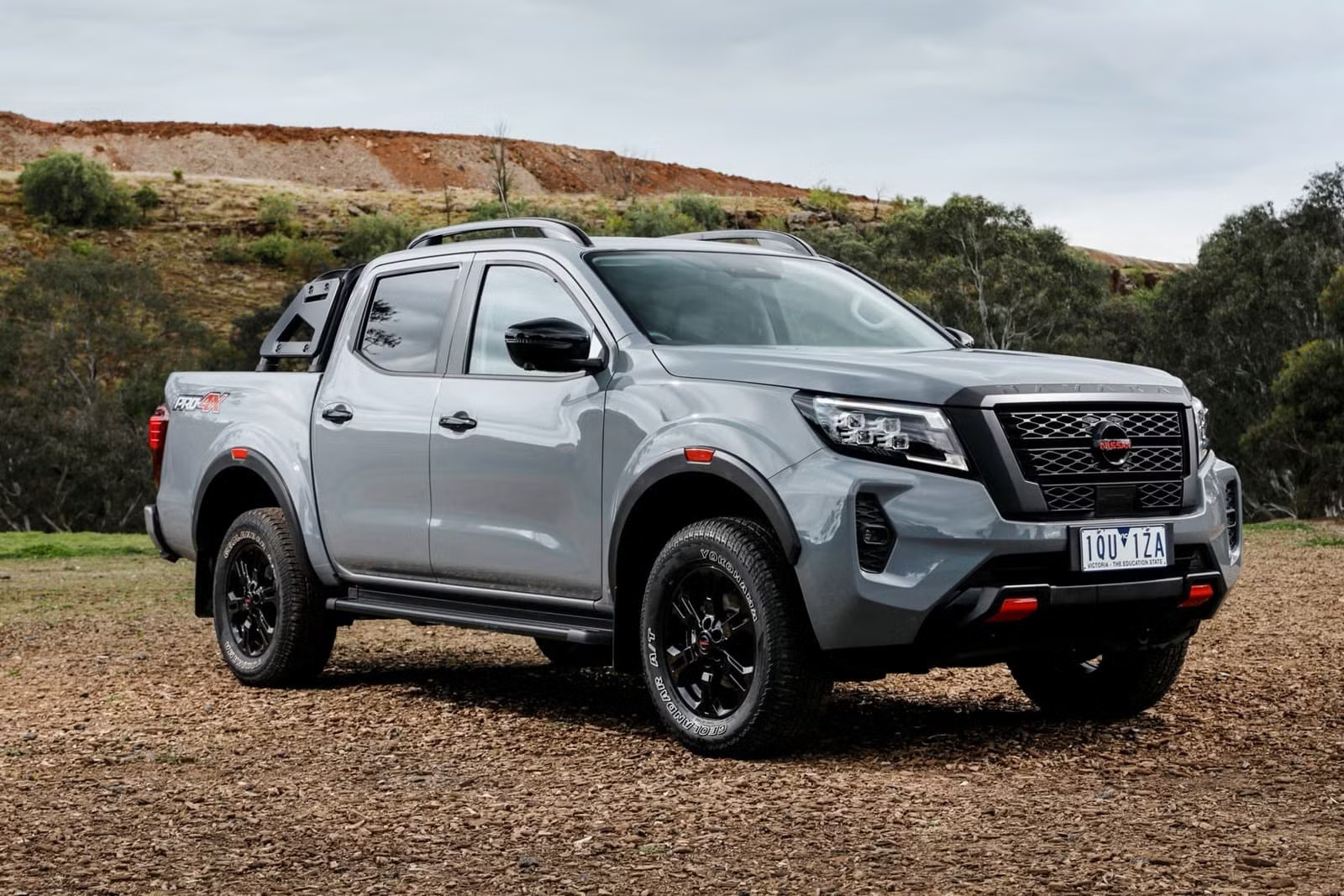
There’s no rust-through warranty beyond the standard five years, and no battery or hybrid considerations (since it’s gas-only), making the coverage feel outdated and inflexible in today’s competitive market.
For shoppers prioritizing value and long-term protection, the Nissan Frontier’s bare-minimum warranty offering is one of its biggest weaknesses—even if the truck itself gets the job done.
2. Chevrolet Colorado – Competitive Specs, Conservative Warranty
The Chevrolet Colorado has made a strong comeback in recent years with a bolder redesign, a capable turbocharged engine lineup, and a much-improved interior. However, one area where the Colorado still lags behind its rivals is warranty coverage.
For a mid-size truck that touts its off-road prowess and daily work usability, the warranty feels surprisingly uninspired and barebones.
Chevy covers the Colorado with a 3-year/36,000-mile bumper-to-bumper warranty and a 5-year/60,000-mile powertrain warranty, which is the exact industry minimum.
At first glance, it might not seem like a big deal—after all, many brands offer this coverage—but Chevrolet offers no major enhancements that would make this protection stand out.
There’s no long-term roadside assistance plan, corrosion coverage is standard at 3 years/36,000 miles, and there’s no complimentary maintenance beyond the first scheduled service.
Compare this to what’s available from Hyundai (with its Santa Cruz), Kia (with the upcoming Tasman), or even Toyota (with longer hybrid battery warranties), and the Colorado quickly begins to look under-protected, especially for buyers planning to push the truck in tougher environments or over longer durations.
This shortfall is especially critical considering that the new Colorado has a turbocharged engine across all trims—a tech feature that often prompts buyers to seek extra coverage for added mechanical complexity.
Unfortunately, Chevy doesn’t meet that need. No turbo-specific protection, no extended roadside help, and no compelling warranty perks to match the vehicle’s technological advancements.
For buyers choosing the ZR2 or Trail Boss trims—intended for off-roading—the standard warranty seems even more inadequate.
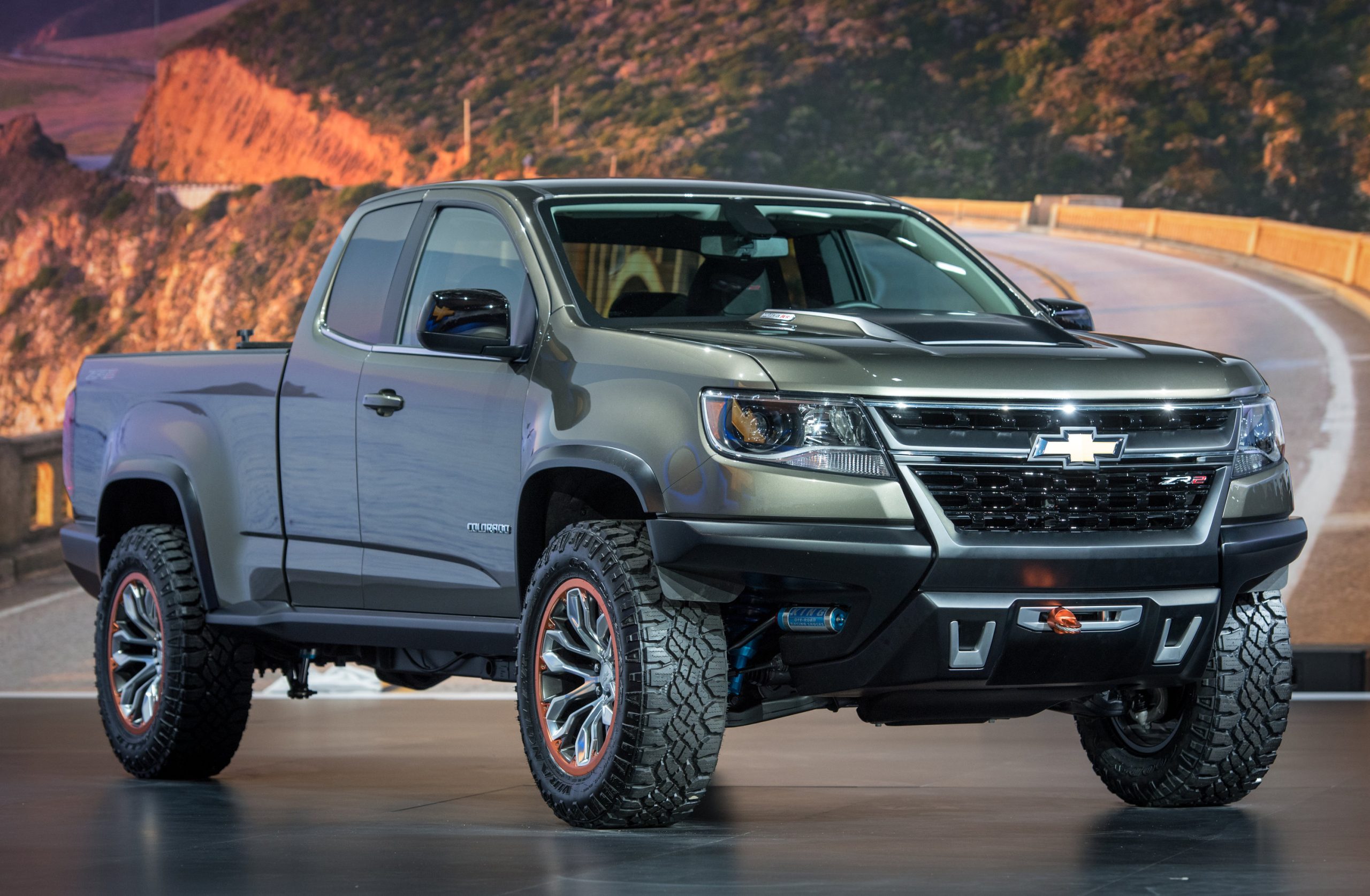
Rugged driving can increase the likelihood of needing suspension work, differential repairs, or electrical fixes, but there’s no specialized coverage or reassurance from GM in these areas.
In contrast, competitors like Ford and Toyota have structured plans that are more flexible and off-road-aware.
Ultimately, the Colorado offers a lot of promise on paper and performs well in many categories.
But for warranty-minded buyers who expect support that matches performance, Chevy’s minimal approach feels like a missed opportunity—especially when you’re spending over $40,000 for a well-equipped trim.
3. Ford Maverick – Affordable Entry, Basic Coverage
The Ford Maverick has shaken up the truck market by delivering genuine pickup capability at a price point that’s attractive to compact SUV and sedan buyers.
It combines impressive fuel economy—especially in hybrid form—with everyday practicality, making it a go-to choice for urban drivers and budget-conscious shoppers.
But behind its forward-thinking appeal, the Maverick is backed by a very traditional and underwhelming warranty—a mismatch for a product that otherwise feels innovative.
The Maverick’s warranty package consists of a 3-year/36,000-mile bumper-to-bumper warranty and a 5-year/60,000-mile powertrain warranty, which is the industry standard but offers nothing extra to distinguish itself.
Even the hybrid version of the Maverick, which uses complex components like regenerative braking and an e-CVT system, doesn’t get significantly better protection.
The hybrid battery warranty is 8 years/100,000 miles, again matching the legal minimum in most U.S. states.
Roadside assistance also stops at 5 years/60,000 miles, and Ford doesn’t offer complimentary scheduled maintenance with the Maverick.
That absence is notable because several manufacturers—like Toyota and Hyundai—include at least 2 years of routine servicing, even on their entry-level models.
Given the Maverick’s appeal to younger or first-time truck buyers—who may not be as experienced with maintenance schedules or repair costs—this lack of support is surprising.
It suggests Ford expects owners to shoulder long-term upkeep themselves, even though the Maverick is marketed as an accessible, easy-to-own vehicle.
The situation becomes even more concerning when considering that early models of the Maverick have experienced some quality-control complaints related to cabin electronics, fit and finish, and hybrid drive quirks.
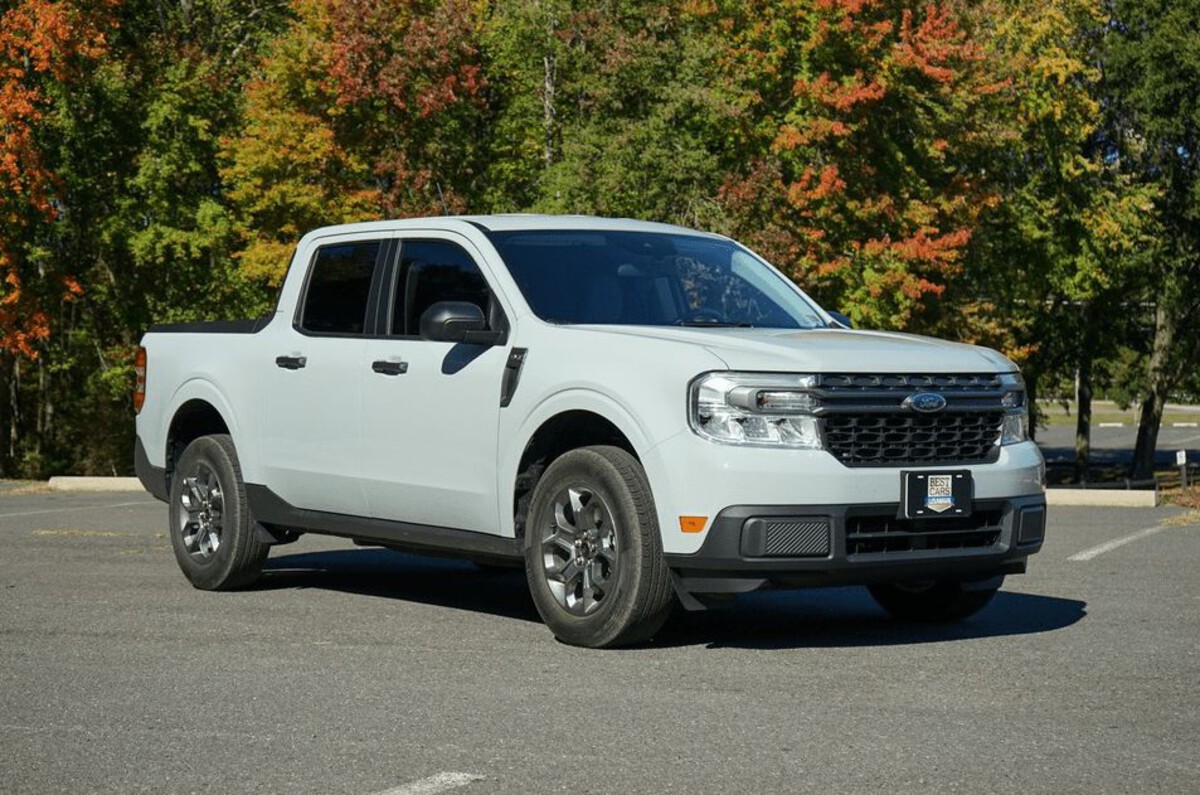
Yet Ford has not extended any special protections or customer-facing warranty improvements to address these issues.
In summary, while the Maverick breaks new ground as an affordable, practical, and fuel-efficient truck, its warranty coverage remains firmly stuck in the past.
For buyers who want innovation in both engineering and after-sales peace of mind, this truck may come up short on the latter.
4. GMC Sierra 1500 – Premium Badge, Average Protection
The GMC Sierra 1500 positions itself as a step up from its Chevrolet Silverado sibling, offering more upscale styling, high-end Denali and AT4 trims, and cutting-edge features like Super Cruise hands-free driving.
With such a premium image and pricing that can exceed $70,000 in upper trims, one would expect a warranty that reflects this elevated status. Unfortunately, the Sierra offers nothing beyond the most basic, bare-minimum coverage in its class.
Just like the Silverado and Colorado, the Sierra 1500 comes with a 3-year/36,000-mile bumper-to-bumper warranty and a 5-year/60,000-mile powertrain warranty.
While technically competitive with others in the full-size truck market, the Sierra falls short by failing to differentiate itself in the warranty department, especially at higher trims where buyers are spending luxury-level money.
GMC does include five years/60,000 miles of roadside assistance—but that’s identical to what its competitors offer. There are no standout warranty perks for the brand’s flagship models like the Denali Ultimate or AT4X.
Worse still, complimentary scheduled maintenance is limited to a single service visit within the first year, which pales in comparison to luxury brands that bundle in multiple years of maintenance with their premium offerings.
This limited coverage raises questions about the long-term cost of ownership. The Sierra is loaded with technology—adaptive air suspension, driver-assist tech, camera systems, and more—that can be expensive to repair out of warranty.
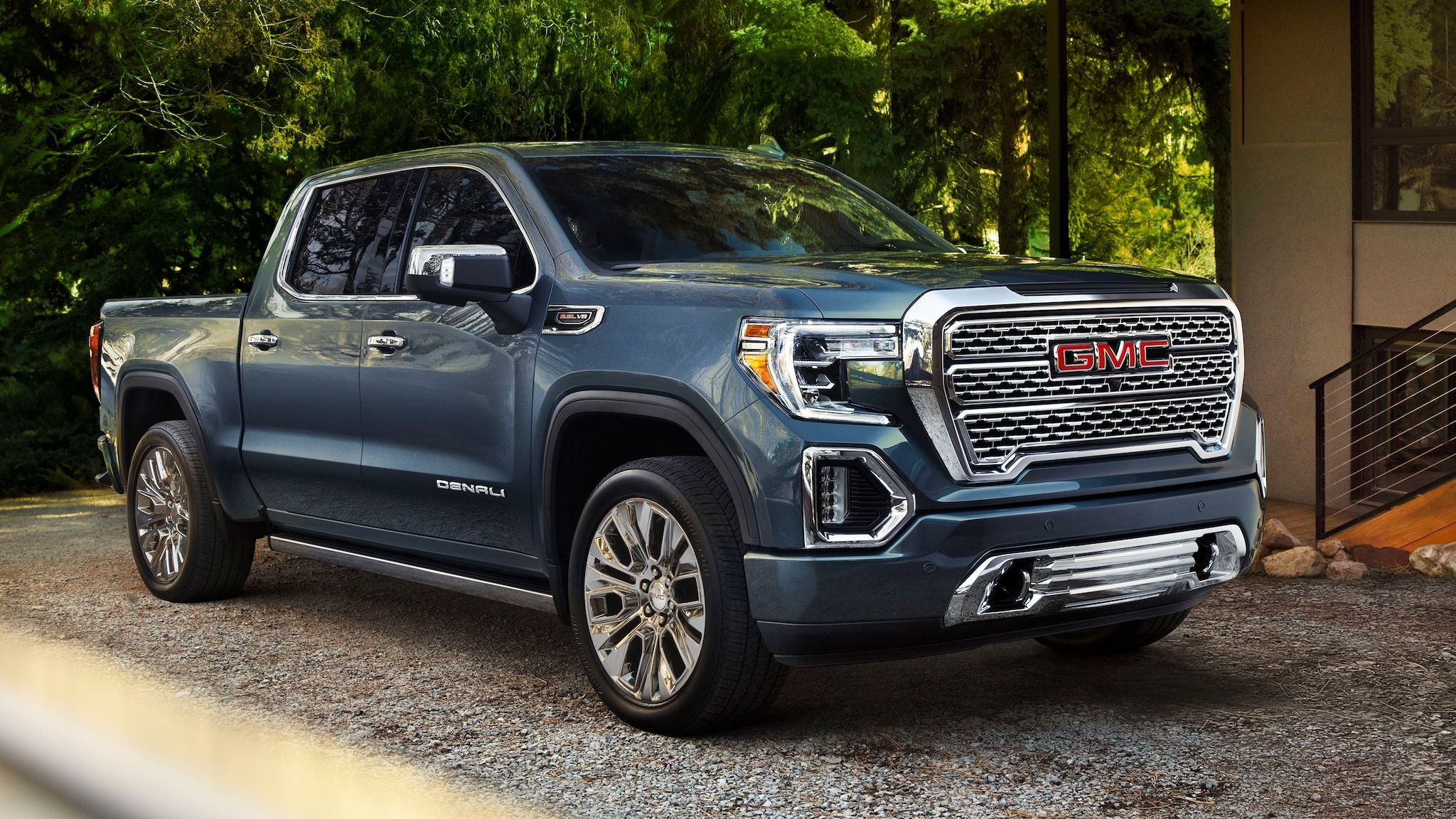
Yet GMC provides no extended coverage or special protection for these components unless the buyer shells out for an extended service contract.
For buyers drawn to the Sierra’s elevated trims, this is especially frustrating. Spending luxury-level money on a truck should come with luxury-level peace of mind, but the Sierra’s average warranty suggests otherwise.
It gives the impression that the brand is more focused on first impressions than long-term commitment.
In the end, the Sierra 1500 is a capable and well-appointed truck. But its lackluster warranty coverage makes it hard to justify against similarly priced competitors that do more to protect their customers over time.
5. Jeep Gladiator – Rugged Reputation, Bare Minimum Warranty
The Jeep Gladiator is a standout in the midsize truck world for its rugged design, off-road capability, and open-air versatility.
Built on the Wrangler platform and offering solid axles, removable doors, and trail-ready trims like the Rubicon and Mojave, it’s marketed as an adventure truck for the bold.
However, when it comes to factory warranty coverage, the Gladiator offers disappointingly basic protection, especially for a vehicle that encourages heavy-duty use in harsh environments.
Jeep provides a 3-year/36,000-mile basic warranty and a 5-year/60,000-mile powertrain warranty, which is standard across much of the industry.
But for a truck that can push deep into rough terrain and often sees more physical abuse than commuter pickups, this minimal level of coverage feels inadequate.
Owners are essentially expected to absorb the risks that come with Gladiator’s off-road prowess.
Additionally, there’s no complimentary maintenance plan—something that competitors like Toyota and Hyundai now include even on lower trims.
Roadside assistance is also limited to 5 years/60,000 miles, with no extensions or extra services built into premium off-road models, despite their higher price tags.
The hybrid tech found in newer Jeep vehicles hasn’t yet made it into the Gladiator, but its electronics and drivetrain complexity—especially with features like sway bar disconnects, locking differentials, and rock-crawling modes—aren’t cheap to repair.
Yet, these high-stress components receive no special warranty extension, even in high-end trims.
Another concern is reliability. The Gladiator shares many components with the Jeep Wrangler, a vehicle frequently criticized for below-average dependability scores.
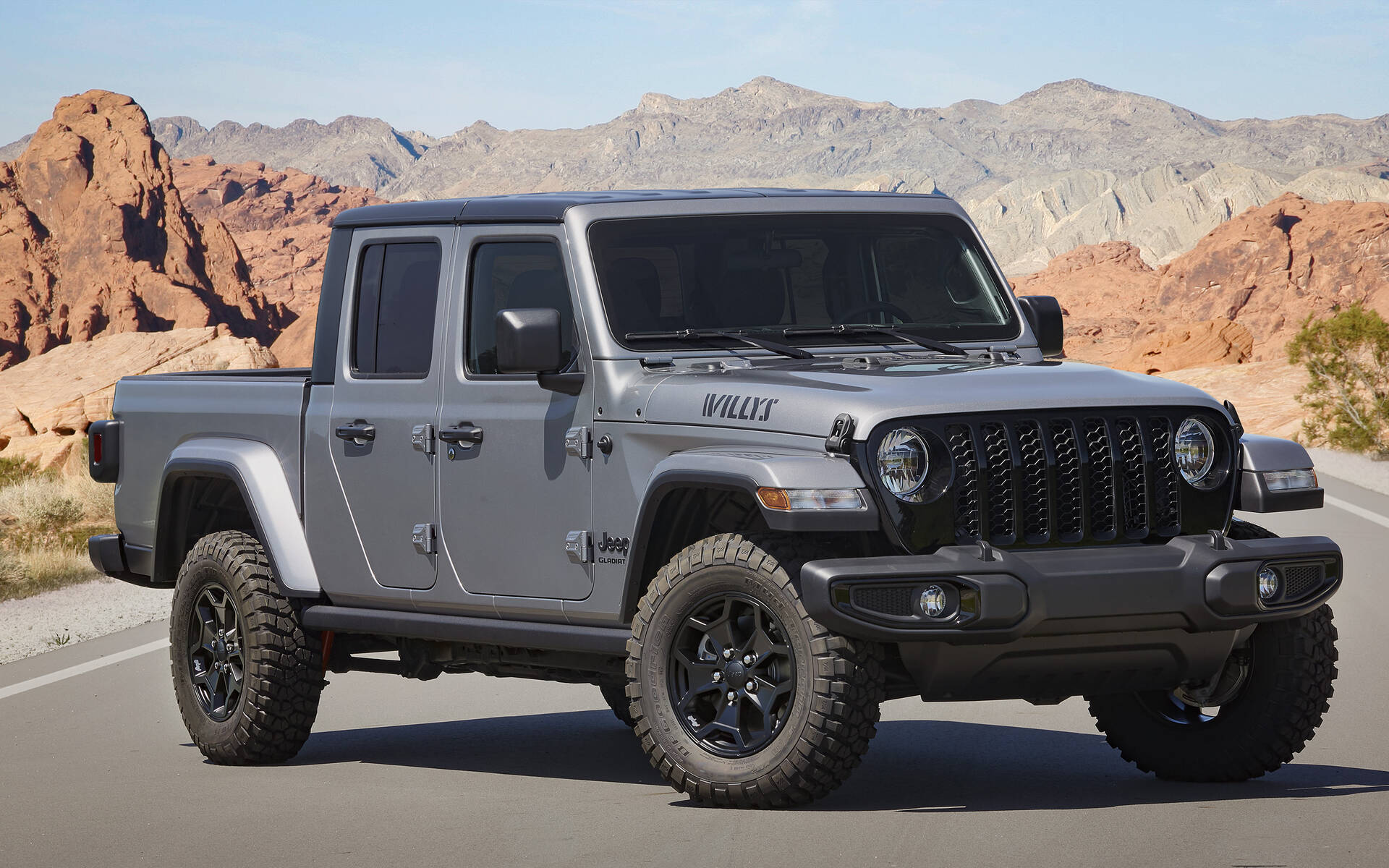
Combined with average-at-best warranty protection, this creates a high-risk scenario for long-term ownership.
For a truck that thrives on extreme usage and outdoor freedom, Jeep’s warranty strategy feels like a mismatch.
While the Gladiator itself might be built to go anywhere, Jeep’s warranty doesn’t go the extra mile to protect its drivers once they get there.
When buying a truck, most shoppers focus on capability, performance, and price—but warranty coverage is an equally critical piece of the puzzle.
As we’ve seen across both ends of the spectrum, the difference between top-tier and bottom-tier warranty offerings can significantly affect long-term ownership satisfaction and financial predictability.
On the strong side, trucks like the Hyundai Santa Cruz, Rivian R1T, and Toyota Tacoma provide warranties that either go beyond industry standards or smartly match their buyers’ expectations.
Whether it’s through extended powertrain protection, hybrid component coverage, or added perks like complimentary maintenance, these trucks offer a genuine safety net for owners.
That kind of coverage isn’t just about saving money on repairs—it’s about trust and confidence in the product.
Meanwhile, trucks with minimal warranty coverage, such as the Ford Maverick, GMC Sierra 1500, and Chevrolet Colorado, may offer appealing features and solid performance—but their basic, no-frills warranties can leave owners exposed when unexpected issues arise.
This is especially concerning for buyers drawn to high-tech trims, hybrids, or off-road variants—models with components that are often costly to fix. A strong warranty can act as a cushion against these repair bills, but in these cases, that safety net just isn’t there.
The takeaway here is simple: a truck’s warranty coverage is a direct reflection of the manufacturer’s confidence in its product.
When brands back their trucks with standout warranties, they’re telling the buyer, “We’ve got you covered.” On the other hand, when coverage is minimal or generic, it may suggest the manufacturer expects you to shoulder the risk.
So as you weigh options and test-drive models, don’t overlook the fine print. Dig into what’s included, how long it lasts, and what kind of support you’ll have five years down the road. Because the real value of a truck doesn’t end at the dealership—it plays out across the miles ahead.
Also Read: 5 Vehicles With Lowest Cost Per Mile And 5 With Highest

